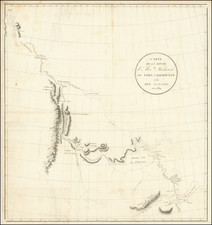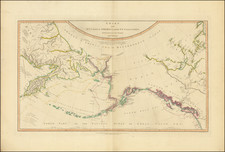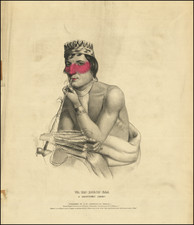Winnipeg in the Middle of Its First Boom Period
Fine large format map of Winnipeg, published as a promotional item for Allan, Killam and McKay, Ltd.
The map is oriented with west at the top and centered the Red River and the area around the Union Depot and the Post Office, with concentric circles radiating out in 1/2 mile increments. City Hall is just to the right of the center of the map, with Canadian Pacific Railroad Complex a bit further east. Wards and early community names are shown, as are street names, transit lines and many public and private facilities, including St. Boniface College, Manitoba University, Osborne Barracks, Provincial Buildings, Wesley College, parks, schools and the Winnipeg Industrial Exhibition Grounds.
Winnipeg
In 1869, the Hudson's Bay Company surrendered its charter rights over Rupert's Land, including the area which would become Winnipeg. In 1870, the British ceded the territory to the Canadian government.
During the transition, a provisional government was set up by locals, which resulted in the Red River Rebellion, a conflict between the local provisional government, led by Louis Riel, and the federal Canadian government. The rebellion was settled with the passage of the Manitoba Act, and the province of Manitoba was admitted into the Canadian Confederation on July 15,1870. To address the Rebellion, the Wolseley expedition travelled to Fort Garry in May 1870, ending the rebellion. The expedition arrived at Winnipeg on August 24,1870, capturing Fort Garry, which had been abandoned by Riel and his supporters.
Shortly thereafter, the locals adopted the name Winnipeg on the masthead of Red River's weekly newspaper, The Nor'Wester. By the early 1873, this settlement grew to be the main population and commercial center in the Red River area, with business activity lining Main Street. On November 8, 1873, Winnipeg was incorporated as a city. In 1876, the post office officially changed its name to Winnipeg.
By 1878, a railway connection to St. Paul was established via the Pembina Branch. The Pembina Branch ran on the east side of the Red River and terminated in St. Boniface, with a transport across the river to Winnipeg by ferry. The Canadian Pacific Railway completed the first direct rail link from eastern Canada in 1881 across the Louise Bridge. The arrival of the Canadian Pacific Railway began a period of rapid immigration and settlement of Winnipeg and the Canadian Prairies, with the city's population growing from 7,900 in 1881 to 42,540 in 1901 and 136,035 in 1911.
States of the Map / Rarity
This is the first state of the map, with later states published 1911 and 1913, each of which is quite rare.
McPhillips first issued a map of the area in 1888 (OCLC locates 1 copy at the National Archives of Quebec) and a new map in 1895 (OCLC locates a single example in the British Library).









![[Route of the 1938 Westward Northwest Passage Cover] Map of the Northwest Territories 1929](https://storage.googleapis.com/raremaps/img/small/60046.jpg)
![[ Alaska & Yukon ] Karte zur Abhanđlung über die Geogn. U. Orogr. Beschaffenheit der N.W-Küste Amerikas u. der anliegenden Inseln mit Zugrundelegung der Karten des Hydrogr. Dep. des See-Ministeriums zu St. Petersburg von C. Grewingk 1849](https://storage.googleapis.com/raremaps/img/small/101812.jpg)

![National Parks of Canada Jasper Park Alberta North Sheet (Preliminary Edition) [with] National Parks of Canada Jasper Park Alberta South Sheet (Preliminary Edition)](https://storage.googleapis.com/raremaps/img/small/88984.jpg)

